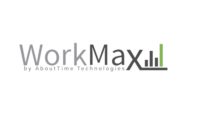Contractors understand that using the right tool for the right job can compensate for a lack of physical strength, height, or skill. The same principle applies to the tools we utilize for collecting data from job sites. Small and medium businesses are able to compensate for the lack of financial clout or physical equipment with the right technology.
While construction technology has shifted so that everyone in the industry can collect live field data, not everyone understands the true value that leveraging real-time data adds to job site productivity and ultimately, the bottom line. That’s why WorkMax developed the Live Field Data Usage Report—to create a snapshot of the construction industry’s data collection methods and outcomes across the board. The company compared data practices of small, medium and large contractors and focused on six key field data collection types for employee labor hours, safety reporting, daily progress reporting, equipment tracking, production, and job cost allocations.
Here are some of the most impactful ways that live field data is equalizing the field:
The Traditional Advantages Large Companies Have Over Small Companies Are Fading
One of the most interesting aspects of the report is the difference between small and large companies. Typically larger companies have always been ahead in the technology race, being able to afford the most cutting edge and expensive solutions. Today, the availability of affordable and easy to use mobile tech means small companies won’t get boxed out. And now that advanced resource management platforms are more accessible, small firms can take back one of the most effective selling points the larger companies have.
For example, the Live Field Data Usage Report shows that 75 percent of companies with over 10,000 employees have live field safety reports in place today, which is in sharp contrast with 23 percent of companies with under 100 employees that use live safety technology. Those small companies that have engaged live field data collection now function with the same risk mitigation tools that companies 100 times larger than themselves are required to use to remain on the top of their game. Data collection has gone the way that all technology does; from costly and difficult to master to widely available and easy to use.
In the past, large companies had the extensive capital necessary to fund costly and lengthy implementations along with the number of employees dedicated to the implementation to make the purchase successful. Now, with cloud-based resource management solutions that collect live field data in one app, the financial and staffing resources that are typically barriers for small to medium businesses are no longer an issue. Small companies can be up and running on a live field data collection app to manage all of their resources all in one place in a week or less without the need for a whole implementation team from their company dedicated to it for months on end.
Integrated, Synced Data Leads To Usable Insights and Increased Project Controls
Due to manual field data collection processes using paper or spreadsheets, and data lagging with apps that aren’t integrated, contractors are making decisions today on data that could be two weeks old or older. How much time is being wasted compiling reports from multiple systems? Even after all that effort, 95 percent of construction data goes unused because it isn’t easily shared and it is already out of date when compiled.
Live field data all in one app allows contractors to work smarter with fewer resources. Live field data levels the playing field and allows you to spend your time analyzing the data to make your company more agile in responding to what’s happening now. You’re no longer spending time collecting inaccurate out-of-date data from the field and creating reports. Having live field data all in one app at your fingertips empowers small to medium businesses to not only manage one project successfully, you can identify the most productive crews or the projects that are furthest ahead of schedule or under budget and apply those more effective tactics across your entire portfolio of projects.
An all in one platform to collect many types of field data gives small firms a competitive edge. There’s less time searching for information by your field employees. They are tracking job costs for the newest projects while only having to focus on those project-specific tasks for the timeliest, most complete and accurate information. They can clock-in and select only from their list of projects they’re assigned to work for the day. Then they will only see the tasks specific to that project with the correct unit of measure to track production as it’s already set up in the app to integrate everything that was collected back into the ERP. They can easily and productively find everything that they need all in the same app. This ensures that they spend less time on administrative tasks like logging into multiple different programs to submit a safety incident form or worse yet, walk over to the job trailer to find the paper form to fill out. The app is in their hands at all times and everything they need to manage time, field reporting, progress, safety, job costs, and equipment tracking is right at their fingertips. If something isn’t working right on their equipment, they can easily see the maintenance reports for it or complete a form to request maintenance or a repair as soon as they identify any issues.
When all of a project’s data is in sync, management can productively spend time using the data to make timely and effective decisions and quickly pivot when they see negative trends.
The report found that:
- 50 percent of companies over ten thousand employees only see production bi-weekly.
- 55 percent of companies with 5,000 through 10,000 employees spend 25 to 50 percent of their time analyzing their field data compared to only 10 percent of companies under 100 employees.
- Large companies have had to be smart about how they run their businesses and if a company can maintain a payroll for 5,000 to 10,000 employees is spending 25 percent to 50 percent of their time analyzing their field data, 25 percent should be the benchmark for all contractors to use.
With live field data all in one app, all project data remains in sync and requires little to no intervention from IT.
Live Control Over Project Progress Improves Transparency To Owners With Less Effort
Live field data’s ability to tighten processes, manage budgets, and expose issues before they get out of hand will create a clear difference between firms that use live field data and those that don’t. Using live field data in one app, small to medium businesses don’t need to have an army of staff to gather the field data to provide accurate progress reports to owners or management. It’s simple for the field employees to provide rich visual progress reports with photos and videos to share the project status using a resource management platform. Employees are entering live field data to track accurate labor hours with GPS and face recognition along with production reporting. The labor hours and production reports are automatically emailed to owners without any human intervention needed. It’s set up once and the owners know exactly what’s happening on all of their projects without physically being there.
Using live field data, it makes it easier to communicate about changes with owners while also being able to identify issues before they become disasters. Owners often prefer reviewing project status reports with rich media to quickly see job site issues instead of waiting for a scheduled conference call possibly days later to ultimately receive outdated or no longer accurate information. It’s faster and more convenient for them to review the progress reports with live field data through photos with annotated markups or embedded videos. It is easier for owners to do business with contractors using these latest technologies to enhance communication and provide global visibility into project statuses while working to keep projects ahead of schedule and under budget. Stakeholders can spend less time in project status meetings and focus their energies on more important things like developing healthy long term client relationships, helping to increase their opportunities for future projects coming from current clients.
Live field data is a game-changer for construction, even more so as we continue to work through the COVID-19 pandemic. If you are interested to see how many other contractors are using live field data or how it can help take your business to the next level of productivity, check out live field data software.












